Understanding Why Dogs Jump on People

Understanding Why Dogs Jump on People
Dogs are social creatures by nature, and jumping on people is often a sign of excitement or a desire for attention. It can also be a learned behavior if it has been rewarded in the past. Dogs may jump on people to greet them, express their happiness, or simply get closer to their human companions. While it may seem innocent, jumping can become problematic if it leads to scratches or knocks over people, especially children or elderly individuals. Understanding the reasons behind this behavior is essential in addressing and preventing it effectively.
A. Reasons why dogs jump on people

Dogs may jump on people for a variety of reasons, but it is important to understand that this behavior is not always malicious. One common reason is excitement. Dogs may get overexcited when they see familiar people, and jumping up is their way of expressing joy and eagerness to greet them. Other dogs may jump out of habit, having learned that jumping up gets them attention or rewards. Some dogs may also jump to assert dominance or establish their place in the social hierarchy. Understanding these reasons can help owners address the issue effectively and find appropriate training methods to prevent jumping behavior.
B. The importance of addressing the issue
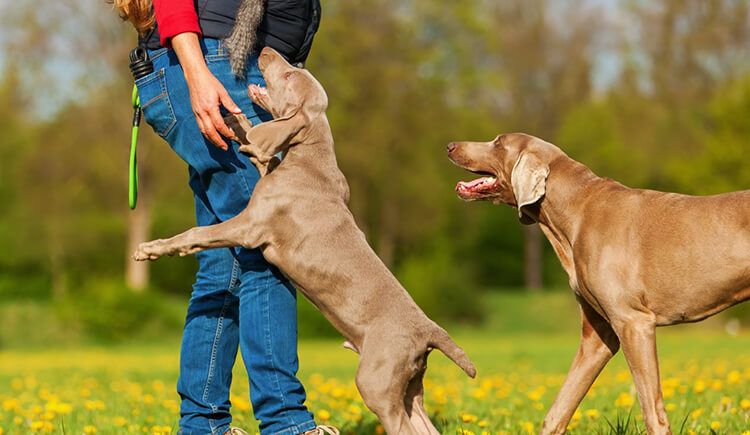
Addressing the issue of a dog that jumps on people is vital for several reasons. Firstly, it is a matter of safety, as jumping dogs can inadvertently cause injury to themselves, the person they are jumping on, or even bystanders. Additionally, allowing your dog to jump on people can reinforce unwanted behaviors and lead to further obedience problems. By addressing this issue, you are promoting a well-behaved and socially acceptable dog, ensuring a positive interaction with others and creating a harmonious environment for everyone involved.
Establishing a Consistent Training Routine
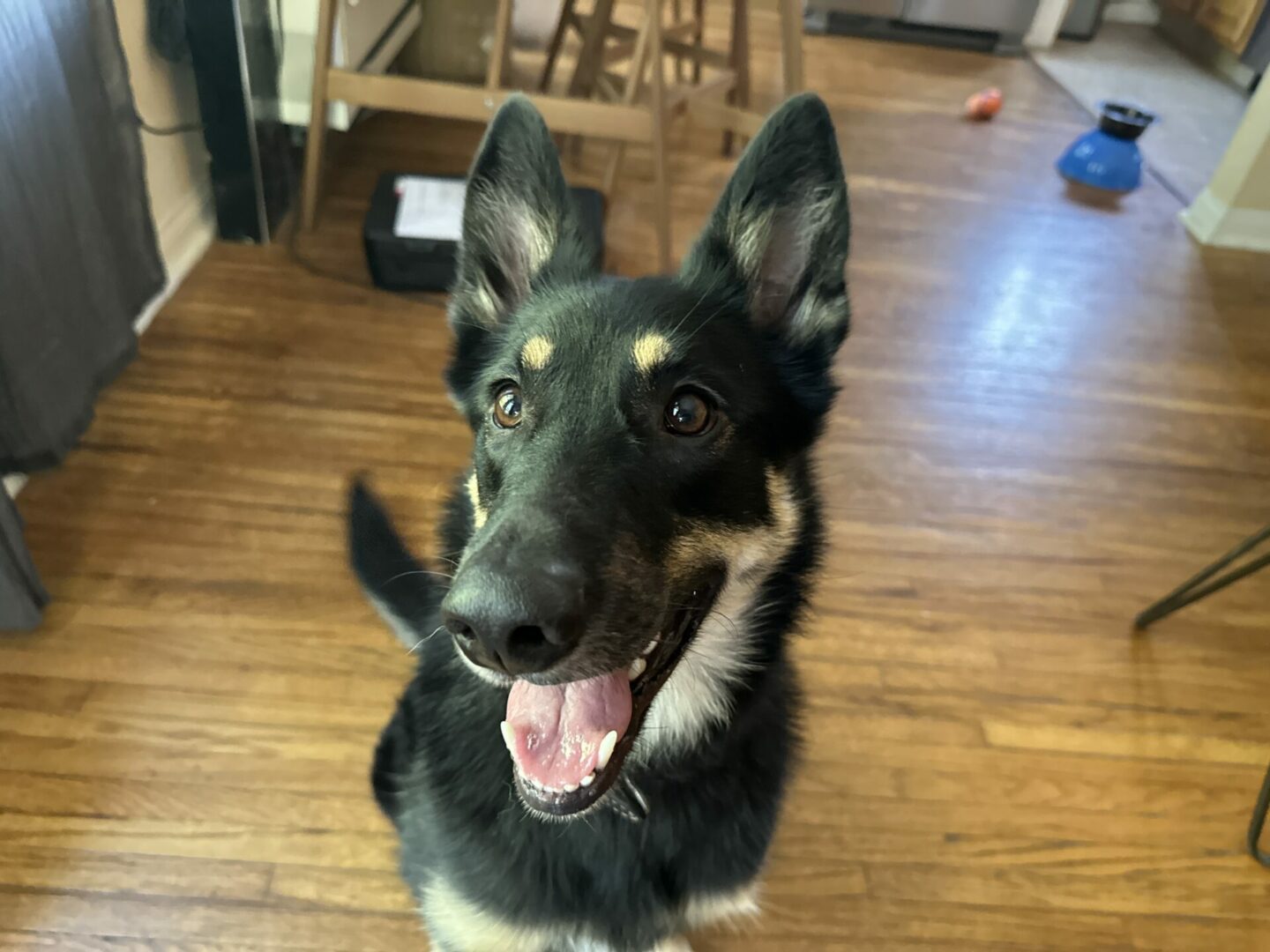
To effectively address the issue of a dog jumping on people, it is crucial to establish a consistent training routine. This involves setting clear rules and boundaries for your furry friend. By consistently reinforcing these expectations, your dog will learn what is acceptable behavior and what is not. Additionally, using positive reinforcement techniques such as treats and praise can be incredibly effective in motivating your dog to follow the rules. With a consistent training routine in place, your dog will have a clearer understanding of how to behave properly.
A. Setting clear rules and boundaries

When dealing with a dog that jumps on people, setting clear rules and boundaries is crucial. Dogs need consistent guidance to understand what behaviors are acceptable and what are not. This involves establishing house rules and making sure everyone in the household follows them consistently. For example, teaching the dog to sit and wait for attention instead of jumping can be a clear rule. By setting these boundaries, you communicate to your dog that jumping is not an appropriate behavior, setting the groundwork for successful training.
B. Using positive reinforcement techniques

Using positive reinforcement techniques is an effective way to address your dog's jumping behavior. When your dog behaves appropriately and does not jump, reward them with treats, praise, or playtime. Positive reinforcement helps create a positive association with good behavior, motivating your dog to continue behaving in the desired manner. By consistently rewarding your dog for staying calm and not jumping, you can reinforce the idea that keeping all four feet on the ground leads to pleasant experiences. This approach encourages your dog to make better choices and helps in reducing jumping episodes.
Teaching Your Dog Basic Obedience Commands
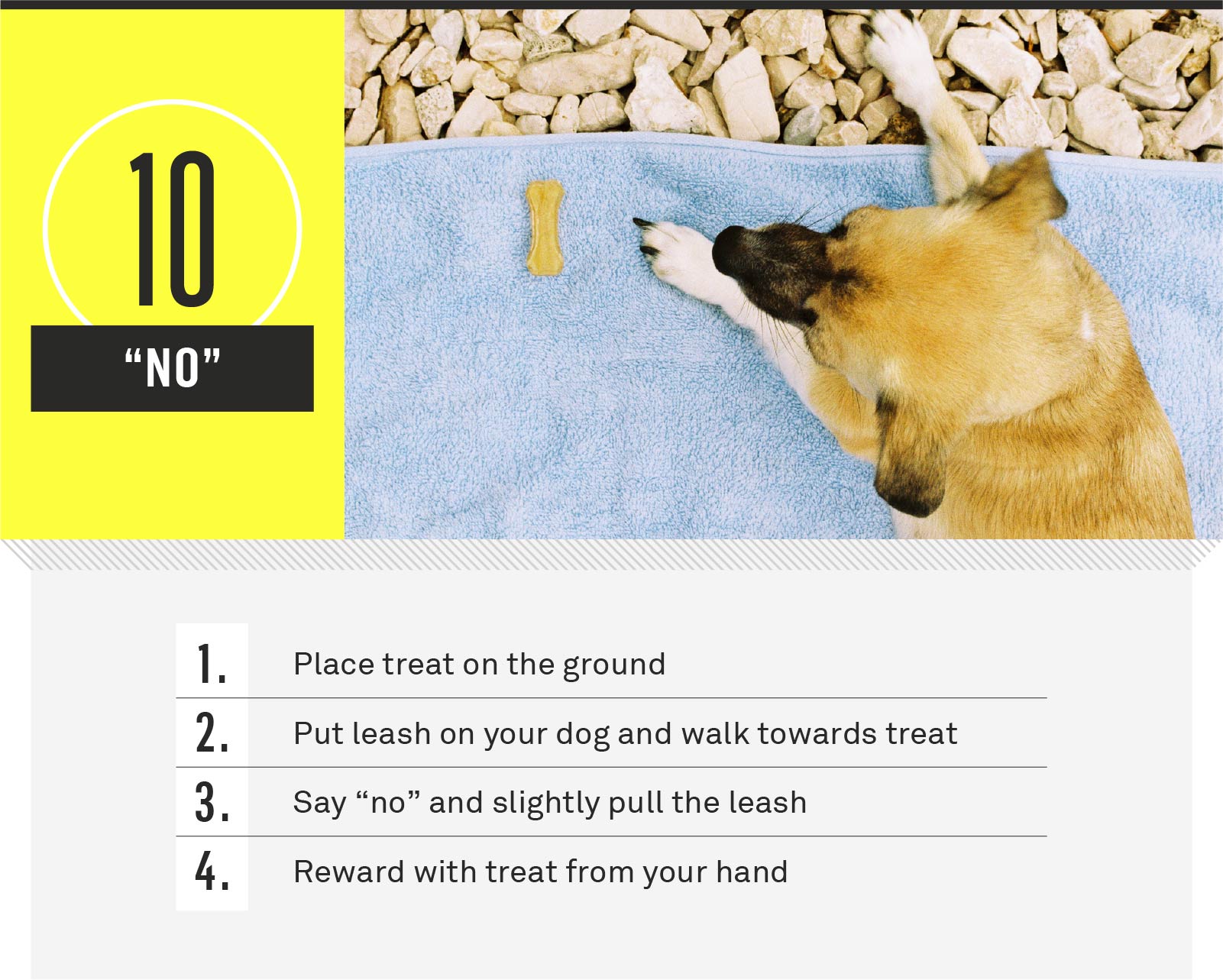
Teaching your dog basic obedience commands is essential in addressing the issue of jumping on people. One important command to teach is the "sit" command. This command not only helps control your dog's jumping behavior, but it also promotes calm and polite greetings. By consistently reinforcing and rewarding your dog for sitting when people approach, you can encourage them to choose this behavior over jumping. Another useful command is the "leave it" command, which teaches your dog to ignore tempting stimuli and focus on you instead. Training these commands will help establish a well-behaved and respectful dog.
A. Teaching the sit command

To effectively address the issue of your dog jumping on people, teaching them the basic obedience command of "sit" is crucial. The sit command provides your dog with an alternative behavior to jumping when they greet people. To teach this command, begin by holding a treat just above your dog's nose and slowly moving it back over their head. As their head follows the treat, their bottom naturally lowers into a sitting position. Reward them with the treat and praise immediately when they sit. Consistently practicing this exercise will help your dog learn to sit on command and prevent jumping.
B. Teaching the leave it command
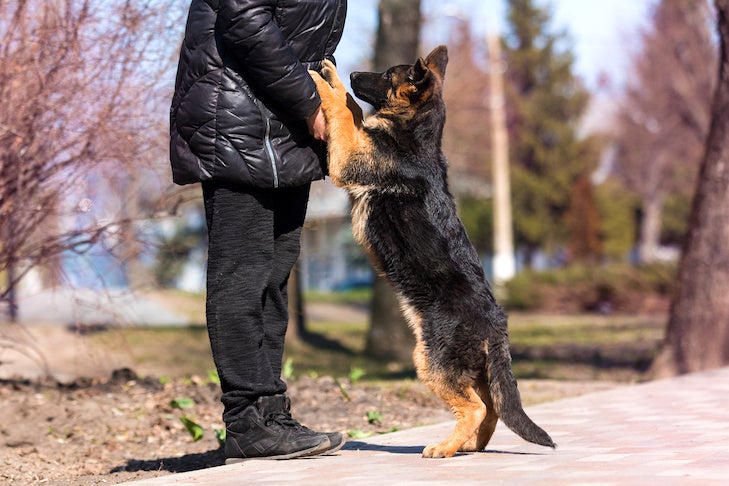
Teaching the leave it command is an essential part of managing a dog's jumping behavior. This command teaches your dog to disregard any object or person that may trigger their jumping response. Start by showing your dog a treat in a closed hand, and when they try to sniff or paw at it, firmly say "leave it" and close your hand. Gradually increase the difficulty by placing the treat on the floor or on a surface within reach. Reward your dog with praise and treats when they successfully ignore the object. With consistent training, your dog will learn to control their impulses and refrain from jumping on people.
Managing the Jumping Behavior
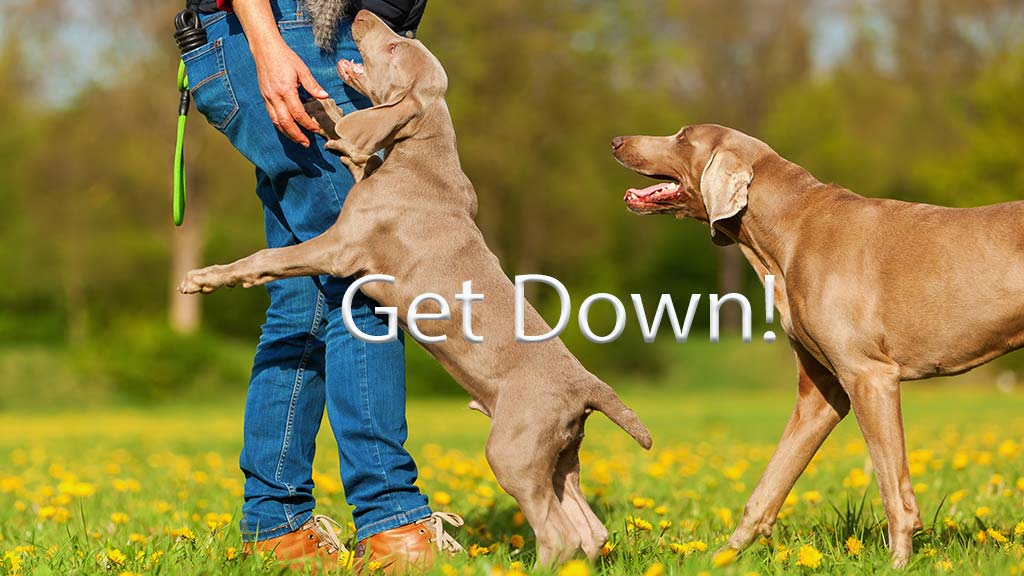
Managing the Jumping Behavior
To effectively manage a dog's jumping behavior, it is crucial to understand how to prevent it in certain situations. One approach is to avoid triggering situations that lead to jumping, such as when guests arrive at the door or during excitement-inducing activities. Additionally, using visual and verbal cues can redirect the dog's attention away from jumping and onto more appropriate behaviors. It's essential to remain consistent and reinforce positive behavior consistently. By implementing these techniques, owners can help their dogs learn alternative behaviors to jumping and promote a calmer, more controlled interaction with people.
A. How to prevent jumping in certain situations
A. How to prevent jumping in certain situations
To prevent your dog from jumping on people in specific situations, it's important to anticipate and address triggers. One effective strategy is to keep your dog on a leash when guests arrive or when encountering new people. By having control over their movements, you can prevent the jumping behavior and enforce calmness. Another method is to use closed doors or baby gates to separate your dog from visitors until they have calmed down. Consistently employing these techniques will help deter jumping and promote good manners in your canine companion.
B. Using visual and verbal cues to redirect jumping
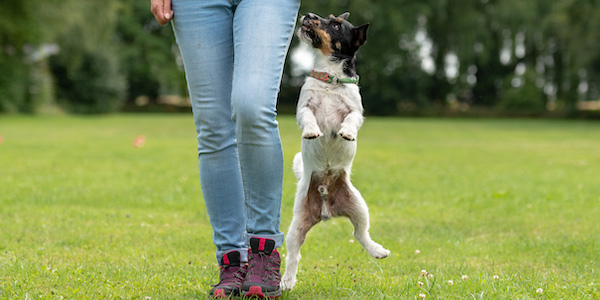
To redirect jumping behavior, visual and verbal cues can be effective tools. When your dog begins to jump, use a firm and confident voice to say "No" or "Off." Simultaneously, raise your hand with an open palm in front of their face to create a visual cue. This combination sends a clear message that jumping is not allowed. Consistency is key, so make sure to use these cues every time your dog jumps. Over time, they will come to understand that jumping is unacceptable behavior.
Socializing Your Dog Properly
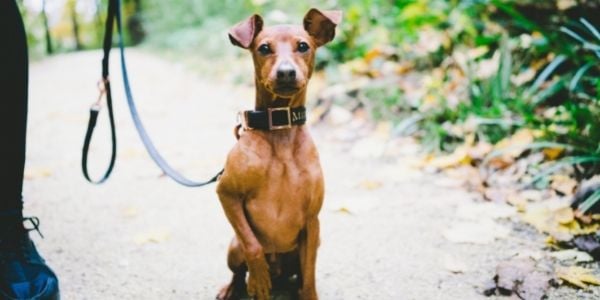
Socializing your dog properly is crucial in addressing their jumping behavior. Exposing your dog to different people and environments helps them become more comfortable and confident in various situations. Take your dog on regular walks, visits to parks, and introduce them to new friends and neighbors gradually. Enrolling in obedience classes or participating in supervised playdates with other well-behaved dogs can provide controlled socialization experiences. By ensuring positive interactions with a variety of individuals and environments, you can help your dog develop the necessary social skills to prevent jumping on people.
A. Exposing your dog to different people and environments

Exposing your dog to different people and environments is crucial for their social development and behavior modification. By gradually introducing your dog to various individuals, such as friends, family members, and strangers, you can help them become comfortable around people of all ages and backgrounds. Additionally, exposing your dog to different environments, such as parks or busy streets, can teach them to remain calm and well-behaved in diverse surroundings. Remember to always supervise these interactions and provide positive reinforcement for good behavior. This process will contribute to a well-rounded and socially confident dog.
B. Enrolling in obedience classes or engaging in supervised playdates

Enrolling your dog in obedience classes or engaging in supervised playdates can be highly beneficial when dealing with a dog that jumps on people. In obedience classes, your dog will receive professional training and guidance, allowing them to learn and practice proper manners around people. Additionally, supervised playdates offer opportunities for your pup to interact with other dogs and people in a controlled environment, helping them develop better social skills and reducing their jumping behavior. These structured activities provide valuable learning experiences while promoting positive behavior and overall well-being for your furry friend.
Utilizing Distraction Techniques

Utilizing Distraction Techniques
One effective method to deal with a dog that jumps on people is by using distraction techniques. These techniques involve redirecting the dog's attention away from jumping and onto something more appropriate. One approach is to offer the dog a toy or treat as a way to shift their focus. By providing an alternative stimulus, such as engaging in play or offering a reward, you can divert their attention and discourage jumping behavior. Additionally, engaging in mentally stimulating activities, like puzzle toys or obedience training exercises, can help redirect their energy and prevent jumping.
A. Using toys or treats to redirect your dog's attention
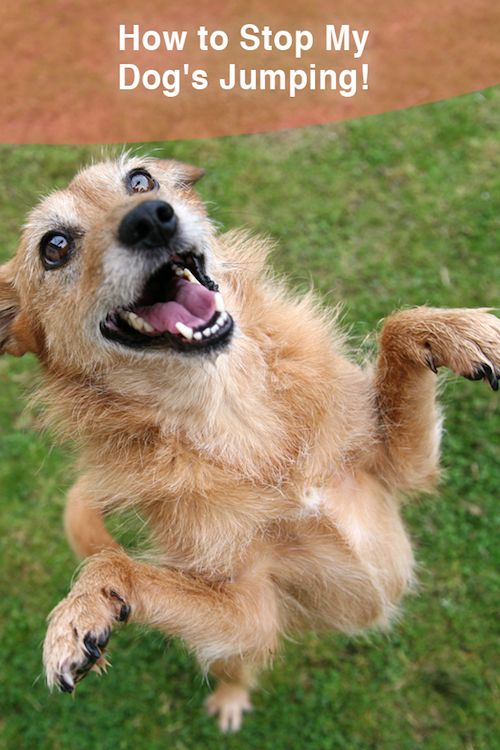
Using toys or treats to redirect your dog's attention can be an effective method in addressing their jumping behavior. By providing a distraction, such as a favorite toy or a tasty treat, you can redirect your dog's focus away from jumping on people. When you notice your dog starting to jump, offer them the toy or treat as an alternative activity. This helps to reinforce positive behavior and teaches them that there are more appropriate ways to interact with people. Keep in mind that consistency is key when using this technique, and rewarding your dog for calm and controlled behavior will encourage them to continue behaving appropriately.
B. Engaging in mentally stimulating activities
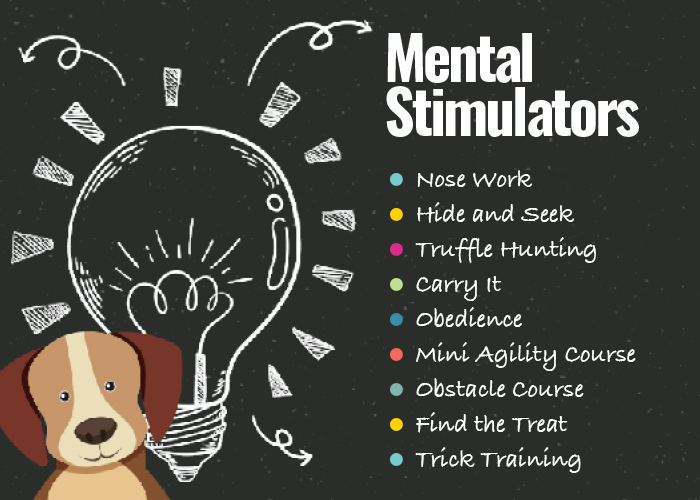
Engaging in mentally stimulating activities can help redirect your dog's attention and energy away from jumping on people. Provide your dog with puzzle toys or interactive games that require problem-solving skills, such as treat-dispensing toys or agility courses. Regularly engage in training sessions that challenge their mind and reinforce obedience commands. Consider incorporating activities like scent work or agility training to keep them mentally stimulated. These activities not only provide mental enrichment but also help tire out your dog, reducing their desire to jump on people out of excitement or boredom.
Seeking Professional Help if Necessary
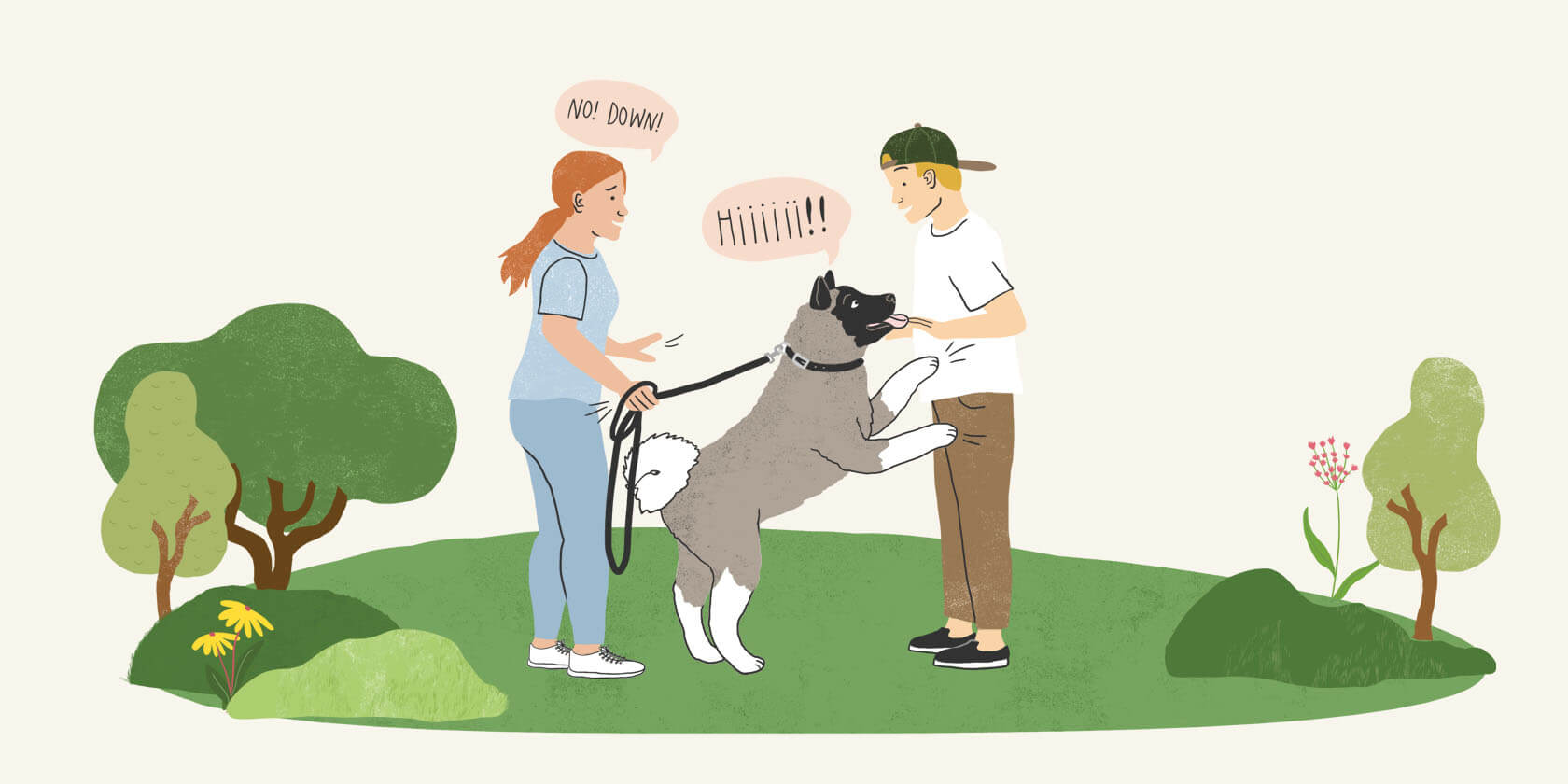
If despite your efforts, your dog's jumping behavior persists, seeking professional help may be necessary. Consulting with a professional dog trainer can provide you with valuable guidance and expertise in addressing the issue. These professionals have extensive knowledge of dog behavior and training techniques, and they can tailor a training program specifically for your dog's needs. In some cases, behavior modification techniques, such as desensitization and counter-conditioning, might be recommended. Remember that seeking professional help is not a sign of failure but rather a proactive step towards resolving the issue effectively.
A. Consulting with a professional dog trainer
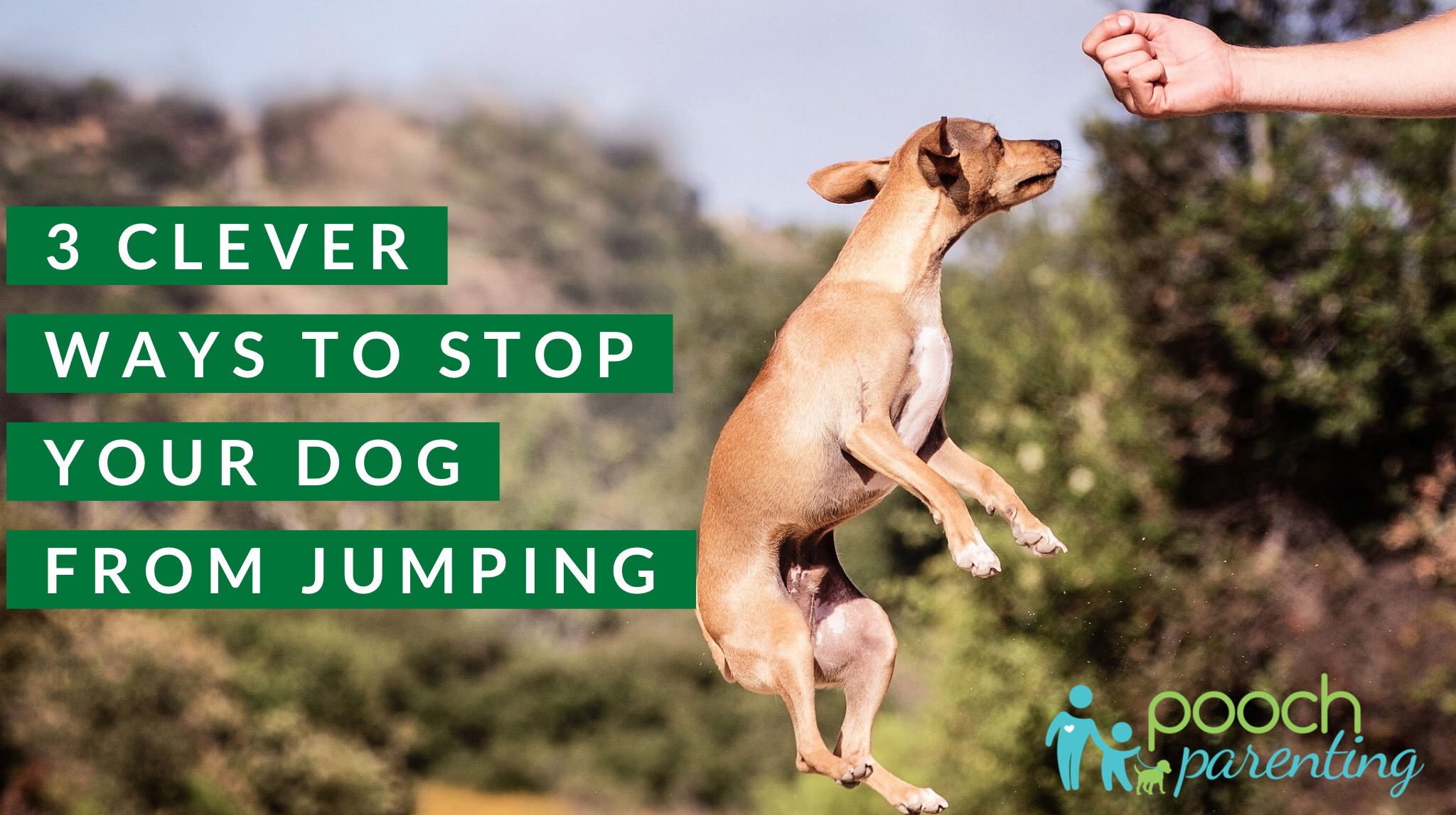
Consulting with a professional dog trainer can be highly beneficial when dealing with a dog that jumps on people. These trainers have the knowledge and expertise to assess your dog's behavior and provide specific guidance tailored to their needs. They can help you understand the underlying reasons behind the jumping and develop a customized training plan to address the issue effectively. A professional dog trainer will also teach you proper techniques for redirecting your dog's behavior and provide ongoing support throughout the training process. With their assistance, you can work towards achieving a well-behaved and polite pup.
B. Considering the use of behavior modification techniques
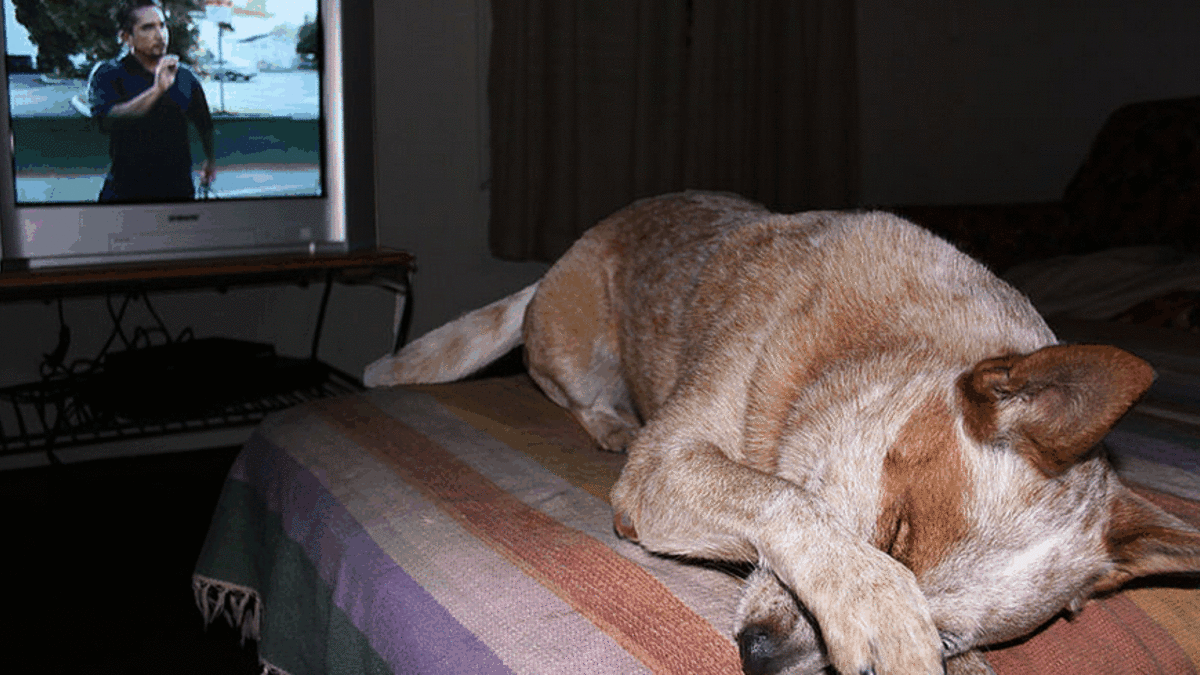
Considering the use of behavior modification techniques is another option for dealing with a dog that jumps on people. Behavior modification involves identifying the underlying causes of the behavior and implementing strategies to change it. This may include techniques such as desensitization and counterconditioning, where the dog is gradually exposed to situations that trigger jumping while teaching them alternative behaviors. It is important to work with a professional dog trainer or behaviorist who specializes in behavior modification to ensure proper implementation and success. Remember, every dog is unique, so finding the right technique may require some trial and error.
Consistency and Patience
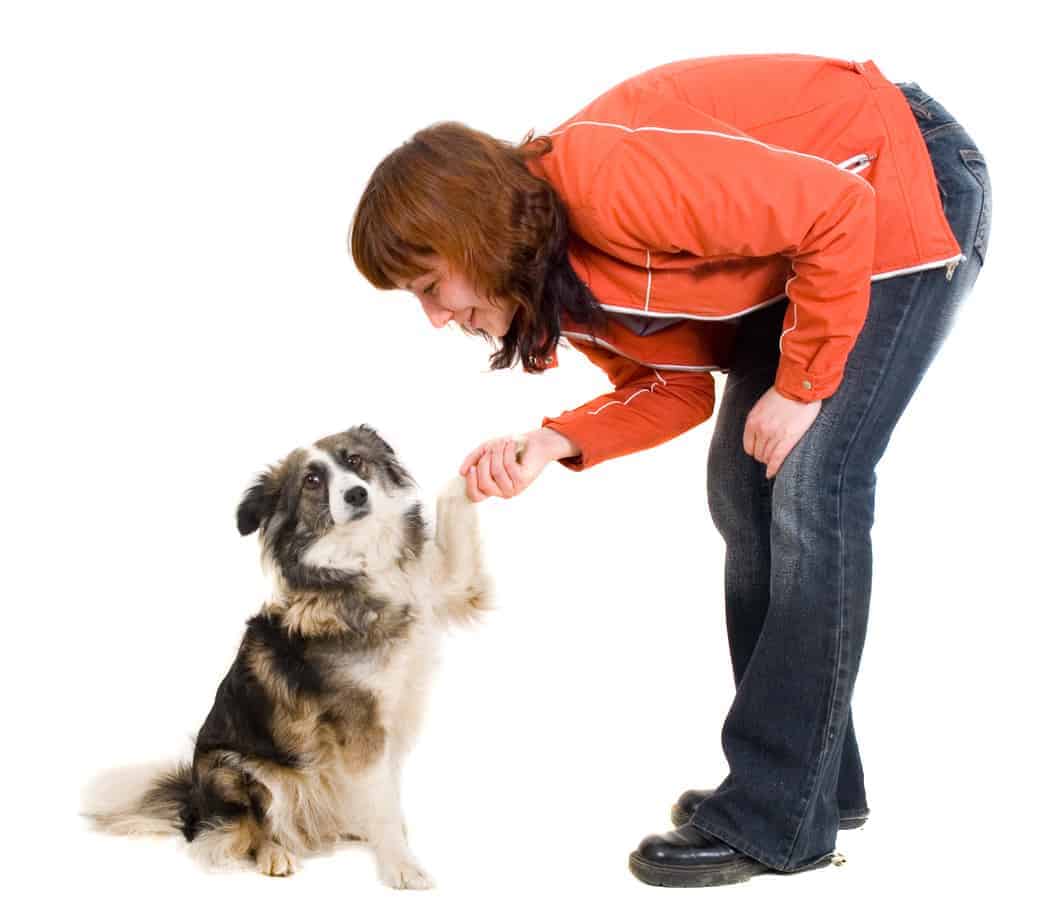
Consistency and patience are key when dealing with a dog that jumps on people. It is important to maintain a consistent training routine, setting clear rules and boundaries for your dog. By using positive reinforcement techniques and teaching obedience commands like "sit" and "leave it," you can help your dog understand what behaviors are expected. It is also crucial to be patient and understanding, as changing behavior takes time. With consistency and patience, you can effectively address the jumping issue and have a well-behaved dog in the long run.
A. The importance of consistency in training

Consistency is key when it comes to training your dog to stop jumping on people. Dogs thrive on routines and clear expectations, so it's important to be consistent in your approach. By setting and enforcing consistent rules and boundaries, you're sending a clear message to your dog about what behavior is acceptable. This helps them understand what is expected of them and reduces confusion. Consistency also reinforces the training you're providing, allowing your dog to develop new habits and behaviors over time. So remember, stay consistent in your training efforts for the best results.
B. Being patient and understanding that it takes time

Being patient and understanding that it takes time is crucial when dealing with a dog that jumps on people. Training your dog to break this habit requires consistent effort and repetition. It's important to remember that dogs learn at their own pace, and progress may vary from one dog to another. While some may pick up on the training quickly, others may take longer to fully grasp the concept. Patience is key during this process, as continuously reinforcing the desired behavior will eventually yield results. Rushing or becoming frustrated will only hinder progress. With time and patience, you can successfully address your dog's jumping behavior.
Conclusion

In conclusion, dealing with a dog that jumps on people can be a challenging but manageable issue. Understanding the reasons behind this behavior and the importance of addressing it is the first step. Establishing a consistent training routine that includes setting clear rules and boundaries, using positive reinforcement techniques, and teaching basic obedience commands is crucial. Managing the jumping behavior through prevention and redirection, proper socialization, distraction techniques, and seeking professional help if necessary can also be effective. Consistency and patience are key throughout the training process. By following these steps, you can successfully address your dog's jumping behavior and maintain a well-behaved canine companion.
A. Recap of main points

In this article, we have discussed how to deal with a dog that jumps on people. We first explored the reasons behind why dogs exhibit this behavior, emphasizing the importance of addressing the issue. Establishing a consistent training routine is key, which includes setting clear rules and boundaries and using positive reinforcement techniques. Teaching your dog basic obedience commands, such as "sit" and "leave it," can also help manage jumping behavior. Socializing your dog properly and utilizing distraction techniques are additional strategies to consider. If necessary, seeking professional help and maintaining consistency and patience will ultimately lead to a well-behaved dog.
B. Tips for maintaining a well-behaved dog

To maintain a well-behaved dog, it's crucial to continue reinforcing the training and techniques mentioned throughout this article. Here are some helpful tips to keep in mind:
- Be consistent: Stick to the rules and routines you have established for your dog's behavior.
- Provide mental and physical stimulation: Engage in regular exercise and provide mentally stimulating activities to prevent boredom.
- Reward good behavior: Continue using positive reinforcement techniques such as praise, treats, and rewards for appropriate behavior.
- Stay patient: Remember that it takes time for your dog to fully grasp new behaviors, so be patient and understanding.
- Seek ongoing education: Attend obedience classes or workshops to further enhance your training skills and learn new techniques.
By consistently applying these tips, you can help ensure that your dog remains well-behaved and respectful towards people.




0 Comments